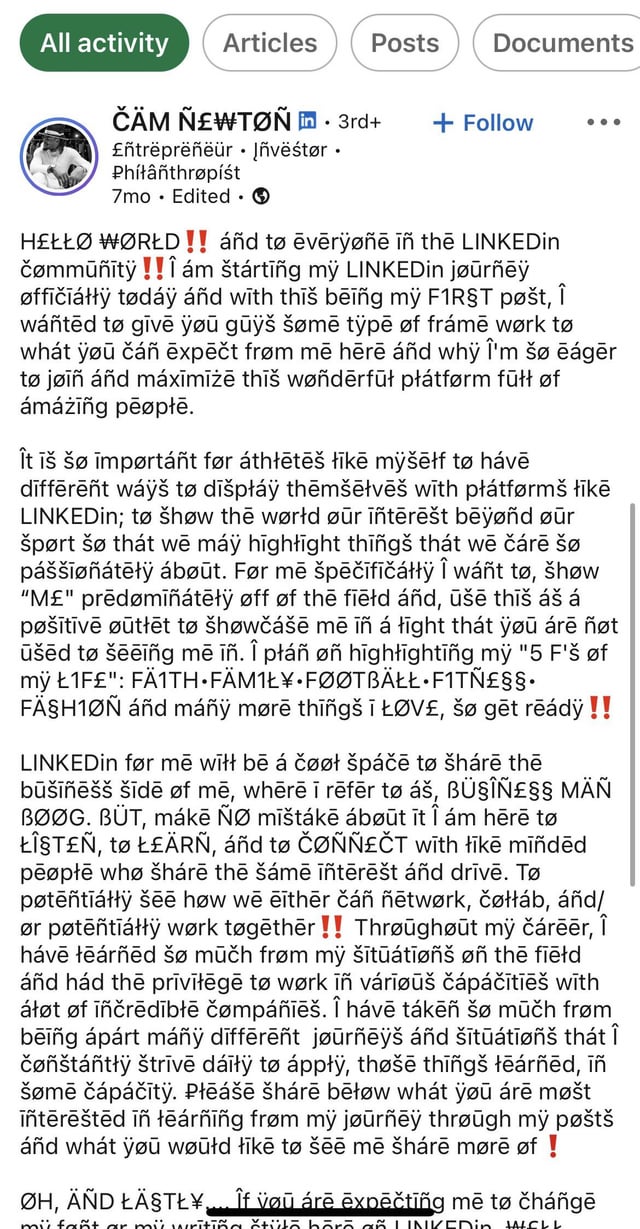Alright, let’s dive into this “Cam Newton Text Generator” thing I messed around with. It was a fun little side project, not gonna lie.

First off, what even is it? Basically, I wanted to create something that could spit out text in the style of Cam Newton. You know, those unique, often cryptic, always confident social media posts he’s known for. I figured it would be a fun way to learn more about natural language processing (NLP) and text generation.
Getting Started: Data Collection. The initial step was obvious: gather as much of Cam Newton’s writing as possible. I scraped his tweets, Instagram captions, blog posts (if he has any), anything I could find. The more data, the better the model, right? It was a real pain to wrangle all that data, cleaning it up and getting it into a usable format.
Choosing a Model. Okay, so I looked into various NLP models. I played around with Markov chains, which are super basic but easy to implement. The output was kinda hilarious, but not quite “Cam Newton” level. Then I tried a Recurrent Neural Network (RNN), specifically an LSTM (Long Short-Term Memory) network, because it’s supposed to be good at capturing the sequential nature of language. This was getting somewhere!
Building the Model. Time to get my hands dirty. I fired up Python, TensorFlow, and Keras, my go-to tools for this kind of thing. I defined the LSTM model architecture, fed it the cleaned Cam Newton text data, and let it train for a while. This part was mostly trial and error, tweaking the hyperparameters (learning rate, batch size, etc.) until the generated text started to sound vaguely like something Cam Newton might actually say.
Generating Text. After training, the moment of truth! I gave the model a starting seed (a word or phrase) and told it to generate a certain amount of text. The first few attempts were… rough. Garbled nonsense, mostly. But after more training and tweaking, it started producing some surprisingly coherent (and occasionally nonsensical) sentences.
The Results & Fine-Tuning. Some of the outputs were pure gold. Stuff like, “I’m feeling blessed and highly favored,” or “It’s all about the energy, baby!” Other times, it was complete gibberish. I tried feeding the gibberish back into the model for further training to refine the output. Think of it like a feedback loop.
Challenges Faced. It wasn’t all smooth sailing. Dealing with the nuances of Cam Newton’s language was tough. He uses a lot of slang, abbreviations, and unique phrasing that the model struggled to grasp. Also, getting the model to capture his overall tone and confidence was a challenge.
What I Learned. This little project taught me a ton about NLP, text generation, and the importance of data quality. It also showed me that even the most advanced models still have limitations. You can’t just throw data at them and expect them to magically understand the subtleties of human language.

- Data preprocessing is key.
- Choosing the right model architecture matters.
- Training takes time and patience.
Would I do it again? Absolutely. It was a fun and educational project. Maybe next time, I’ll try using a transformer model like GPT to see if I can get even better results.
Final Thoughts. The “Cam Newton Text Generator” isn’t perfect, but it’s a decent attempt at capturing the essence of his unique voice. It’s a reminder that even in the age of AI, there’s still something special about human creativity and expression.














